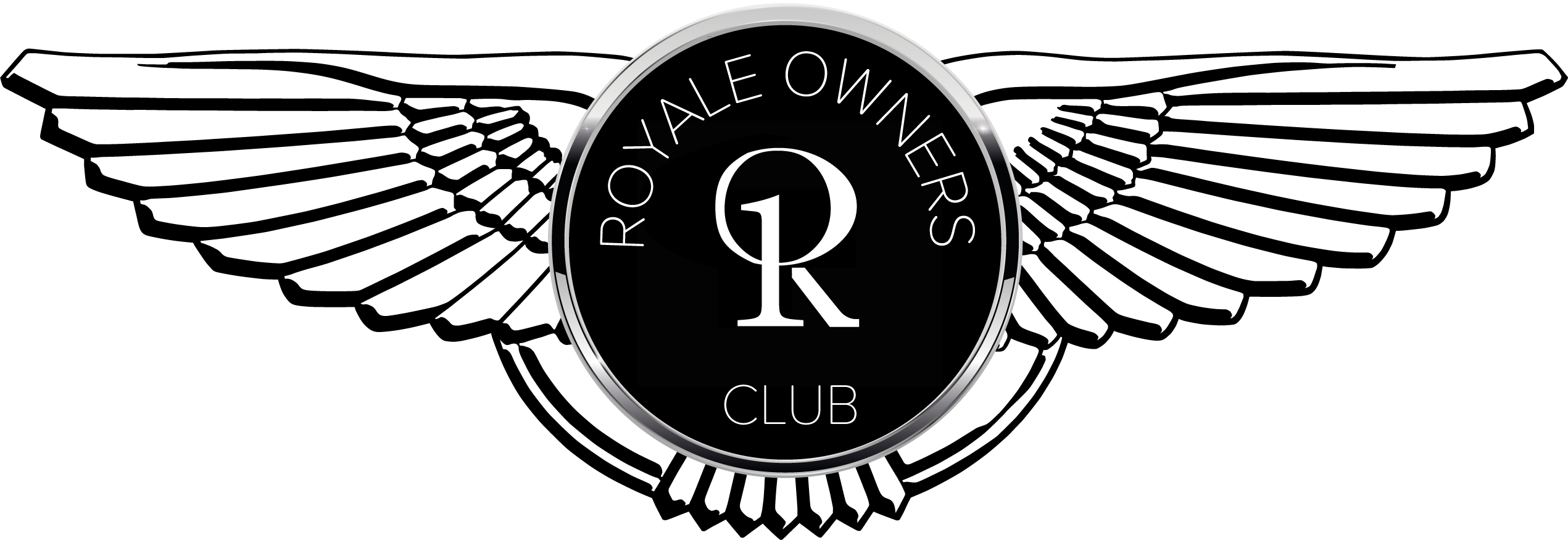Chris Fisher's Dropheads
I bought my Royale Drophead kit from John Barlow of the Royale Motor Company in February 1992.
The Royale Drophead was John’s first design for the Royale Motor Company, the donor car being a Series XJ6 (1968-92).
The donor car I used was a 1979 Series II XJ6 that had received a rear end shunt.
The Royale uses virtually the entire mechanisms of the XJ6, the exception being the heater which is rather large and instead uses the one from a Ford Sierra. The front and rear axle assemblies complete with their frames, the engine, gearbox, propshaft, exhaust system, hand brake cable all being unmodified and used as standard. Even the standard radiator is used, being turned through 90° to fill that large upright chrome grill.
One of the items to be modified is the steering column which is extended to accommodate the longer wheel base that is achieved by moving the front axle assembly forward, keeping the relationship between the engine and rear axle as standard, thus allowing all standard Jaguar parts to be used.
The first job was cutting all of the holes and slots in the body, this was a very easy job as they were all pre-marked in the glass-fibre. The mouldings supplied were of an extremely high standard, so there were no problems making parts fit. The pre-marked holes in the body could be drilled and the corresponding pre-marked holes in the wings could be separately drilled, such was the accuracy of the moulding and the holes lined up perfectly.
Once all the holes had been drilled in the glass-fibre, the body and all its panels were removed from the chassis. The chassis was supplied in a raw state, so after removing the temporary bolted axles, the chassis was shot blasted, etch primed before receiving a final coating of chassis black.
The front and rear axles were finally re-fitted with new mounting rubbers, next the custom made fuel tank which was supplied with the kit, then the engine and gearbox complete with propshaft and exhaust. The rotated radiator was next, mounted on special brackets (all being supplied with the kit).
After painting the body was mounted to the chassis, the boot sections, the doors complete with XJ6 electric windows and central locking, followed by the alloy bonnet and removable alloy side panels which allow easy access to the engine for maintenance.
Before I completed the build the government introduced the SVA test (later replaced by the IVA test) which all kit cars must pass, even the cars like mine which were designed and bought long before the SVA test was thought of. Luckily for me the Royale was a well designed car using most of the Jaguar components, so it already had the dual circuit brakes and collapsible steering column. Although it would fall foul of a few problems like markings on the windscreen, E-marks on the headlights and even things like the radius of the dashboard instrument bezels.
As my car was purchased prior to the SVA it was allowed to go through a relaxed test by the year 2000 which was 18 months away at the time.
The biggest problem that the SVA would not overlook was the windscreen. Although it was a laminated screen there were no marking on it to prove it and the glass company that supplied it was no longer trading. I had bonded the screen in and wasn’t looking forward to hacking it out of my newly painted body, so I took the car to my local windscreen fitter. They were excellent and able to cut a new windscreen from a flat Land Rover one with the all important E mark etched in the corner. A perfect job was done with the old one removed and the new one bonded into place without even a small scratch in my gleaming paintwork.
The car was taken by trailer to its SVA test. Even though it was a relaxed test, this test took nearly four hours. Unfortunately, the car failed on a few points. These being no dashboard brake pressure test light, engine emissions and an intermediate speedo. At the time you were given 3 months for a re-test. With the issues resolved the car passed the SVA test.
I have since purchased the Royale Drophead Project and am now in possession of the jigs, the fixtures, the moulds and the drawings.
Chris Fisher
Fisher Motor Co
